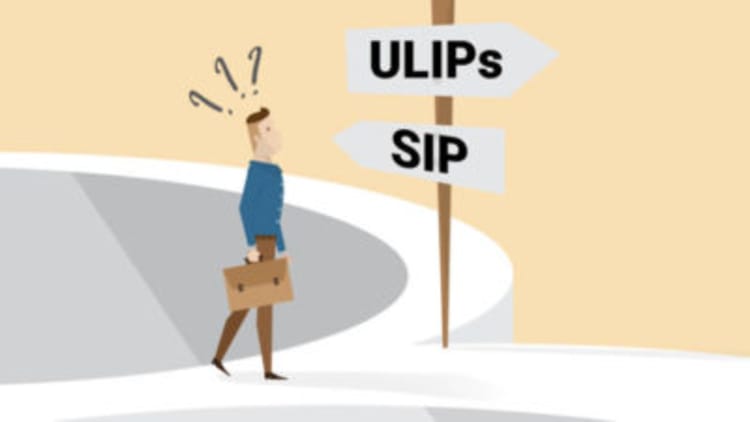You must have heard the name of IRDAI in the context of insurance. Many of you have the basic understanding that IRDAI is the insurance regulator but is it all there is to know about it?
While it is true that IRDAI is the regulator of the insurance sector, you should also understand its role, duties and the powers that it has over insurance companies. So, let’s understand the history of IRDAI and its roles and duties.
Establishment of IRDAI
Prior to the year 1999, the insurance segment was solely controlled by the Government of India and Government-owned companies were allowed to sell insurance products. In 1993, the Government formed the Malhotra Committee to recommend reforms in the insurance segment so that the segment can be made more productive. The Committee recommended liberalisation of the insurance sector which would allow private companies to enter the insurance market. However, if private companies would enter the insurance market, it would become necessary for an authorised body to monitor and govern the workings of the insurance companies.
This reason paved the way for the establishment of IRDAI. In the year 1999, the Insurance Regulatory and Development Authority Act was passed which established IRDAI as an autonomous body for governing insurance companies. Later on, in April 2000, the Insurance Regulatory and Development Authority of India (IRDAI) was established as a statutory body for the insurance segment. Today, IRDAI has its headquarters in Hyderabad and is chaired by Mr Subhash Chandra Khuntia.
The objective of establishing IRDAI
The Insurance Regulatory and Development Authority Act was passed to create IRDAI so that –
- The interests of policyholders would be protected
- The insurance industry can be regulated and promoted
- The insurance industry can grow orderly without any ambiguity
Duties and powers of IRDAI
Today, IRDAI is the apex body which governs all aspects of insurance. Though the Insurance Act, 1938 lays down the rules and regulations for insurance companies, IRDAI ensures that insurers follow the rules prescribed under the Act. Moreover, IRDAI also monitors the insurance sector and makes changes in the rules prescribed under the Insurance Act so that the insurance sector can adapt to the changing needs of society.
IRDAI is tasked with various duties, functions and powers under Section 14 of the IRDA Act 1999. These powers and duties are as follows –
- Issue and renew certificates of registration to insurance companies so that they can sell insurance. Moreover, IRDAI also has the power to suspend, cancel, withdraw or modify the certificate of registration which it had issued
- IRDAI has to protect policyholders’ interests in matters of assignment, nomination, claim settlements, insurable interest, surrender value which they can receive and other terms and conditions of the insurance policy
- The eligibility criteria, the requirement of training and examination for insurance agents is fixed by the IRDAI. It also lays down the code of conduct which insurance agents are expected to follow when selling insurance policies to individuals
- The IRDAI also specifies the code of conduct which should be followed by loss assessors and surveyors of the insurance company
- It is the duty of IRDAI to promote efficient insurance growth
- IRDAI inspects, audits and collects relevant information from insurance companies and other organisations which are connected with the business of insurance. This is done for monitoring purposes to ensure that companies and organisations are following the prescribed IRDA regulations in conducting their business
- The manner of preparing the books of accounts and financial statements of insurance companies as well as their intermediaries is specified by IRDA
- IRDAI has to oversee that insurance companies invest their funds as per the rules prescribed under the Insurance Act, 1938
- IRDAI also regulates the solvency margins of insurers. It ensures that insurers maintain the minimum solvency margin as specified in the Insurance Act, 1938. Solvency margin is the rate by which the insurer’s assets exceed the liabilities. A high margin is favourable as it depicts a strong financial standing of the company
- The minimum percentage of the insurance business which must come from the rural and social sector is specified by IRDA. Both life and general insurance companies are expected to meet the prescribed minimum business requirement from rural areas by selling micro-insurance policies
Besides these roles and powers, IRDAI is free to exercise any other power as it might see fit for the regulation of the insurance industry.
Unique rights of IRDAI
Though IRDAI performs the above-mentioned duties and has different powers, here are some of the unique rights of IRDAI –
- IRDAI also promotes as well as regulates other professional organisations which are connected with the business of insurance or reinsurance. These professional organisations might also receive a percentage of the premium income of the insurance company for promoting and regulating themselves. The IRDAI specifies this percentage which insurance companies have to pay
- As per the provisions of Section 64U of the Insurance Act, 1938, most of the rates and terms of general insurance business are regulated or controlled by the Tariff Advisory Committee (TAC). However, if, in certain cases, the TAC cannot control the rates and terms, IRDAI can control and regulate such rates and terms
- In case of any disputes between the insurance companies and their intermediaries, the IRDAI can step in as an adjudicator
- The functioning of the Tariff Advisory Committee is supervised by the IRDAI.
To sum up
All said it is quite clear that IRDAI is like to principal of the school called the insurance sector. It is tasked with the duty to ensure that the sector functions smoothly without any hitches. Moreover, through amendments and IRDAI regulations, IRDAI continuously makes changes in the insurance rules so that the insurance industry can keep pace with the changing needs of individuals. So, if you are worried about trusting an insurance company, relax. The company is governed by the rules of IRDAI and is genuine. You can also raise any complaints that you have with your insurer with IRDAI and it would help you get your grievances resolved.
Frequently Asked Questions
- Can I approach IRDAI for grievance redressal?
You should initially try to redress your grievance through the insurance company’s internal grievance handling department. But if you are dissatisfied, you can approach the IRDAI and it would help solve your disputes. - Are agent licenses given by IRDA?
Yes, the licensing of agents is under the purview of IRDAI’s duties. It issues the licenses to eligible agents who clear the prescribed insurance exam. This duty was incorporated through the IRDA (Licensing of Insurance Agents) Regulations which was passed in the year 2000. These IRDA regulations contain the rules for applying and availing an agent’s license. - Does IRDAI protect the policyholder’s interests?
Yes, it does. IRDA passed a resolution in the year 2002 for the same. This was called IRDA (Protection of Policyholders’ Interest) Regulations 2002. These IRDA regulations lay down the rules which insurance companies and their intermediaries should follow to ensure that the policyholder’s interests are protected at the time of sale of the policy as well as at the time of claims. - How to lodge a complaint through IRDA?
The IRDAI has established the IRDA Grievance Redressal Call Centre (IGCC) which is a channel for lodging your complaints. You can call the toll-free number of the call centre which is 155255 or 1800 4254 732. Alternatively, you can also send an email to complaints.irda.gov.in to register your complaints against insurance companies or their intermediaries.















